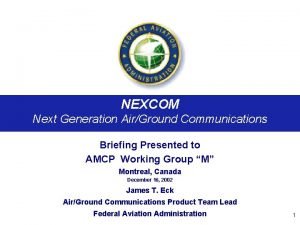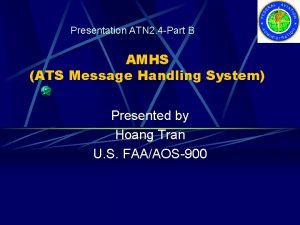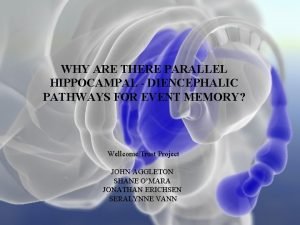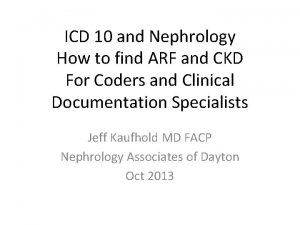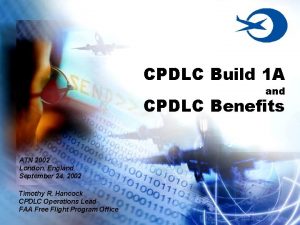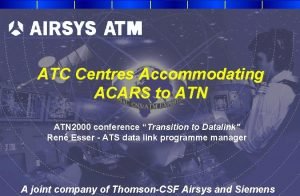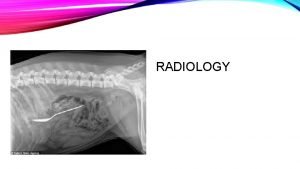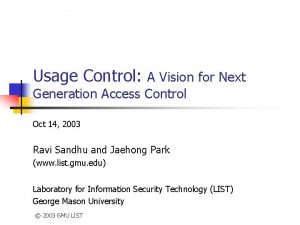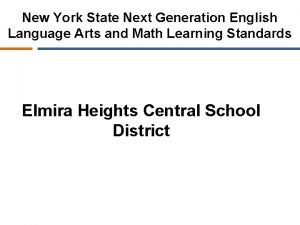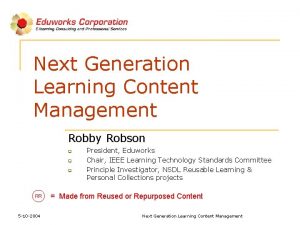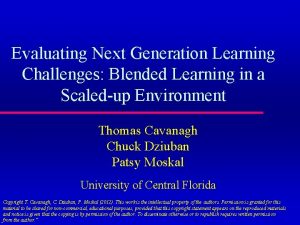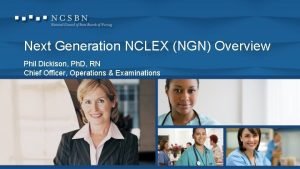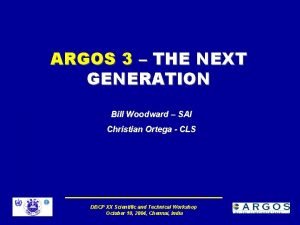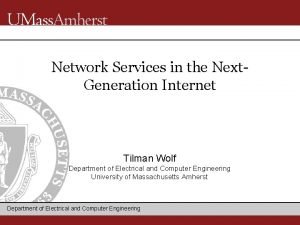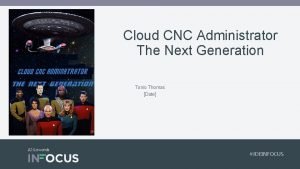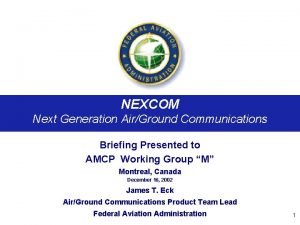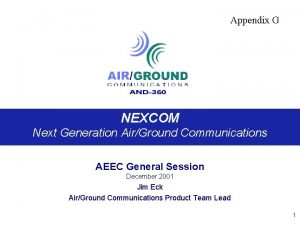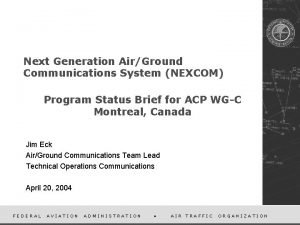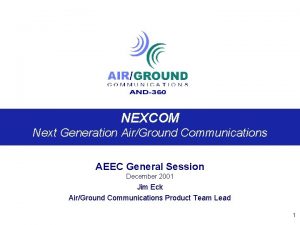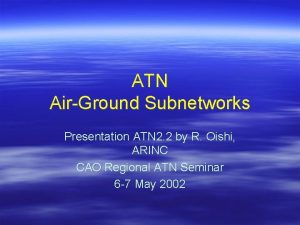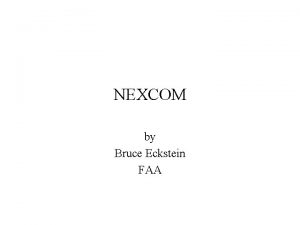Next Generation AirGround Communications NEXCOM Presented to ATN



















- Slides: 19

Next Generation Air/Ground Communications (NEXCOM) Presented to ATN 2002 London, England 25 September 2002 James H. Williams Communications Integrated Product Team Lead Federal Aviation Administration

Overview • NEXCOM Acquisition Program Update – Program Objectives – Program Elements – Transition to NEXCOM • NEXCOM Voice Features – Basic Voice – Enhanced Voice • NEXCOM Data Link Transition 2

NEXCOM Objectives 720 BUECs 346 Towers 793 RCAGs 1422 RTRs 61 AFSSs, 14 FSSs 1854 RCOs 175 TRACONs National Airspace System Infrastructure Sustainment National Airspace System Infrastructure Modernization 3

NEXCOM Acquisition Program Elements Multimode Digital Radio Ground System VHF T/R Radio Ground Interface Network Unit Interface Analog & digital modes in one radio Avionics Analog & digital in single cockpit radio Digital capability System Demo Program Show NEXCOM system architecture and commercial avionics viability 4

NEXCOM Multimode Digital Radio 5

NEXCOM Ground System Segment CMU Da ta RCAG Voice Avionics VHF Tx/Rx M/S Radio Interface Unit Data DLAP UHF Tx/Rx M/S Voice Switch GNI Voice Combined Voice & Data 2 V 2 D Configuration BUEC Data VHF Tx/Rx ATN Router Radio Interface Unit UHF Tx/Rx 6

NEXCOM Avionics Airlines General Aviation Business Aviation FAA/Manufacturer Agreements 7

NEXCOM System Demonstration Program Objectives – Oct 02: VDL Mode 3 Technology viability – Oct 03: NEXCOM Architecture feasibility – Oct 04: Operational suitability 8

National Airspace System Transition to NEXCOM 5 -10 years Next 5 years 10 -15 years 15 -20 years Enroute High Airspace Dem/Val VDL-3 Link VDL-2 Datalink Analog Voice RCAG ARTCC National Airspace • Analog Voice, 25 KHz • Initial Datalink (VDL-2) • Maintain Terminal Analog Voice AFSS Terminal Airspace • Expand Enroute Digital Voice (VDL-3) • Expand Digital Voice (VDL-3) to all domains • Implement VDL-3 • Expand Datalink Capacity • Initiate Terminal • Full Operational Evaluation Digital Voice in all domains Digital Voice (VDL-3) & Exercise of Digital Voice and all applications and Datalink (VDL-3) • Expand Datalink VDL-2 • Increase Datalink Capacity (VDL-2 & VDL-3) Applications & Capability (VDL-2 & VDL-3) 9

NEXCOM Key Basic Voice Features • Anti-Blocking – Resolution for stepped-on transmissions • Controller Override – Controller can preempt ongoing aircraft transmission for urgent control message – Resolution for aircraft “stuck mike” 10

NEXCOM Key Enhanced Voice Features • Enhanced Voice features require a context management application to enable the system to identify specific aircraft • Next Frequency – Uplink of next frequency for pilot concurrence/action – Coupled with CPDLC transfer of communications • Urgent Downlink Request – Cockpit-generated data message to controller that pilot has an urgent transmission to make 11

NEXCOM Data Link Transition • Increased use of data link is essential to increasing the capacity of the NAS • CPDLC is FAA’s application for air traffic control messages • FAA views VDL Mode 2 and VDL Mode 3 as complementary, not competing technologies • CPDLC Build 1 and 1 a initially will be fielded on VDL -2 – Only viable technology in required time (2005 NAS-wide) – Stepping stone for data link use in air traffic control 12

NEXCOM Data Link Transition • Growth in CPDLC Use – Increases system and user benefits but – Also drives up FAA costs • CPDLC on VDL-3 means – Predictable costs to FAA – No added service costs to users • Continued availability of CPDLC on VDL-2 – Independence of networks a safety backup benefit – FAA could not continue to fund message costs 13

Discussion 14

Spectrum Depletion The FAA predicts VHF Spectrum Saturation in the National Airspace System by 2009 15

Frequency Congestion Cost and Efficiency Implications 25 Historically, circuit growth has been 4% per year. Growth in A/G Circuit Demand Circuits (1000 s) 20 Increasing cost/difficulty of placing new circuits reduces growth rate. # Deployed A/G Circuits Reduced growth rate implies a less-efficient NAS. 15 Unsatisfied Demand Reduces NAS Efficiency 23 spectrum recovery initiatives (ASR) Increasing Cost and Difficulty of Provisioning New Circuits 10 5 1998 2003 2008 2013 2018 2023 2028 Year 16

NEXCOM System Architecture CMU Da ta RCAG Voice Avionics VHF Tx/Rx M/S Radio Interface Unit Data DLAP UHF Tx/Rx M/S Voice Switch GNI Voice Combined Voice & Data 2 V 2 D Configuration BUEC Data VHF Tx/Rx ATN Router Radio Interface Unit UHF Tx/Rx 17

NEXCOM System Demonstration Program System Demo I Equipment • Air: MITRE Prototype • Ground: • ‘ 99 Configuration • ITT MDR with FAA Prototype RIU Oct 02 Oct 03 Oct 04 System Demo II Objective: Show VDL-3 technology is viable Objective: Show NEXCOM system architecture viability Objective: Show commercial avionics certifiability and operational suitability Demonstrates: • Coverage • Voice Quality • Voice Override • Integrated Voice and Data Demonstrates: • Sector Handoffs • ATN Network Interoperability • System Management • Commercial infusion • Technology maturation Demonstrates: • Operational digital voice • Commercial avionics • Human factors Operational System Demo II Equipment • Air: • MITRE & FAA Tech Center Prototypes • Vendor Avionics (prototype) • Ground: • ITT MDR with FAA Prototype RIU • Do. D Participation • Air Carrier Participation Operational System Demo Equipment • Air: Vendor Avionics • Ground: • ITT MDR with FAA Prototype RIU & GNI • Do. D Participation • Air Carrier Participation

NEXCOM Schedule 2001 2002 System Demo Program Multimode Digital 7/01 Radio Contract 5/02 FAT 10/01 4/02 Sys Reqs SIR Doc Release Avionics 10/01 12/01 MOPS GIAs Rule Making 2004 10/02 System Demo I 10/03 System Demo II 2005 2006 2007 2008 2009 10/04 Operational Demo MDR deployment Award Ground System 2003 10/02 5/03 In-Service Begin Decision Deployment Validation & Inter-Operability Tests with Airborne Avionics 10/02 RPDE Contract Award 10/02 Draft Characteristics Complete 1/02 RTCA Principles of Operation 9/03 8/03 8/04 AEEC Notice of of AEEC Notice Apprvd Certified Availability. Approved Aircraft Char. TSO 6/03 Begin Formal Internal Coordination 1/04 NPRM 6/04 Initiate Final Rule 07 -12 Implementation 1/05 Full Scale Dev 10/07 Contract Award Keysite 12/09 Operational 6/05 -12/09 Aircraft equip 6/05 Rule Published 19
 Nexcom
Nexcom X.next = x.next.next
X.next = x.next.next Faaaos
Faaaos Atn
Atn Lindsey's nails
Lindsey's nails Atn cpdlc
Atn cpdlc Dlrg prüfungsfragen
Dlrg prüfungsfragen Atn 2000
Atn 2000 First generation antipsychotics
First generation antipsychotics Lord your mercy endureth forever
Lord your mercy endureth forever Next generation radiology
Next generation radiology Usage control model
Usage control model Nys ela standards
Nys ela standards Next generation content management system
Next generation content management system Next generation learning challenges
Next generation learning challenges Phil dickison
Phil dickison Next generation network definition
Next generation network definition Argos next generation
Argos next generation Network as a service for next generation internet
Network as a service for next generation internet The next generation
The next generation
